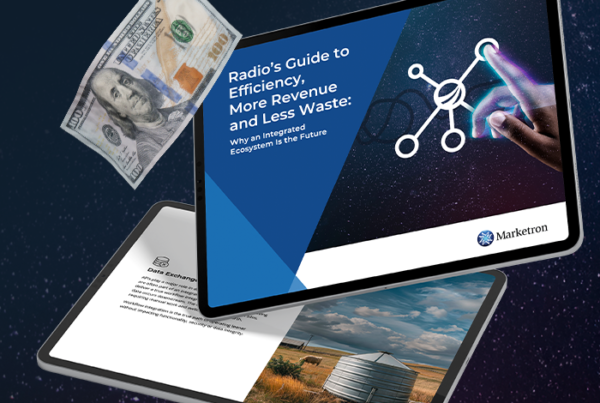The customer journey is no longer linear. How people make buying decisions is very messy in an omnichannel world. Decisions now occur in the “messy middle,” according to Google. This theory and the reality of buying choices represent the fragmented customer journey. Explaining this to advertisers helps them better understand your ad tactic recommendations and sets you up as a valued partner.
In this post, we’ll look at the messy middle and how to holistically approach the topic with advertisers without getting in the weeds.
What Is the Messy Middle?
Google’s customer insights team defines the messy middle as a “complex space between triggers and purchase, where customers are won and lost.” They identify two things that happen here — exploration and evaluation.
People seek information and compare, but it doesn’t always happen in that order. Additionally, people go back and forth between the two. Sometimes they may start over completely. Exploration and evaluation don’t occur in specific intervals, either. For example, people can research a trip or a product that they plan to purchase way in the future.
What influences their final decision also varies. Google research identified six main areas:
- Descriptions and product specifications
- Accessibility of the product (now vs. later)
- Social proof
- Availability of product and the demand for it
- Expert or trusted source recommendation
- Free gifts with purchases
In looking at these influencers, you can quickly see how they can align with digital advertising tactics and the creative associated with them. Sharing this information is a great way to introduce conversations about fragmented customer journeys. You’ll want to correlate to specific ad campaign types that enable your customers to close the gap between triggers and purchases.
What Created the Fragmentation?
One of the biggest reasons for fragmentation is access to information. Customers can quickly find just about anything with a few clicks. That empowers them to come into buying decisions with critical information. The more expensive or complex the product or service, the more investigation it deserves.
Another key reason is that customer expectations keep evolving. They look beyond just the product or service to also prioritize experiences and the values and integrity of brands. According to research from PwC, 73% of customers say experience is an important factor in purchasing decisions. An Accenture study found that 63% of consumers prefer to buy goods and services from companies that share a purpose and reflect their values and beliefs.
The buying ecosystem is much more complex now with new types of influence, information access and expectations. For these reasons, the linear model no longer applies. So, what kind of advertising advice can you deliver to your customers?
Advertising and the Fragmented Customer Journey
In presenting the solutions to fragmentation, consider these points.
![]()
Recommend a multichannel advertising campaign.
Advertising in one channel creates a silo and likely won’t engage buyers at any phase of the journey. Diversification and reiteration in messaging are crucial in both targeted and broad advertising. A good way to think about this is how one type of advertising lifts another. Substantial data demonstrates that radio and TV ads drive people to search and find information online. That initial ad spot creates a lift for digital ad tactics, and these complementary campaigns address that “messy middle” conundrum.
For example, a person sees a local ad for an entertainment venue. They then head to search online, where they may click on a paid search ad or visit the website. They find out some details but don’t purchase. Because the visitor was on the site, retargeting ads can be active.
Still, the user doesn’t convert but comes back to the website to look at rates for special events. Next, they may sign up for a newsletter. The company can now use email targeting to keep feeding information and offering promotions. Finally, the customer converts by purchasing tickets for a birthday celebration many months after the initial engagement.
![]()
Emphasize the value of retargeting.
As noted in the above example, retargeting can get customers back to a website. It can be a very successful tactic because it engages people who have shown interest. Retargeting also has many formats, including display ads and OTT/CTV.
Discuss how retargeting can close the gap between triggers and purchases with your advertisers.
![]()
Suggest geofencing to increase impulse purchases.
Geofencing is a great tactic that draws people to physical stores or restaurants when they are nearby. That’s a good way to capitalize on impulse purchases. It’s about creating some urgency and FOMO around the ad content with today-only deals. In the perfect scenario, retargeting and geofencing can work together to target audiences most likely to convert.
![]()
Discuss long-term brand awareness campaigns.
Your advertisers can find value in long-term brand awareness campaigns in multiple channels to influence buyers wherever they are. That’s especially true for products or services with longer buying processes.
For example, homeowners considering major renovations don’t make that decision in a few days or weeks. Many factors lead to an inquiry with a contracting company. Along the way, they’ll be looking for those factors that Google labeled as influential — social proof, descriptions, credibility, etc.
Thus, your customers may find success with brand awareness ads that emphasize these things and keep their company top of mind. In this example, they would target homeowners by launching display ads on home remodeling sites, targeting ZIP codes and homeowner status on social media, and using local TV ads to showcase their work.
Fragmentation Is Here; Guide Your Advertisers Through It
Understanding the fragmented customer journey and applying it to advertiser goals empowers your customers and amplifies your value. If they want to improve their ROAS (return on ad spend), considerations around the new customer journey are imperative. Use these tips and ideas to cement the relationship and execute campaigns that dive into that messy middle.
Get more great digital advertising strategy tips by reading Updating Your Digital Selling Strategy for 2022.






